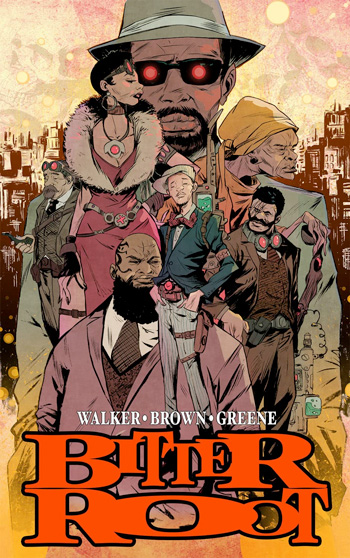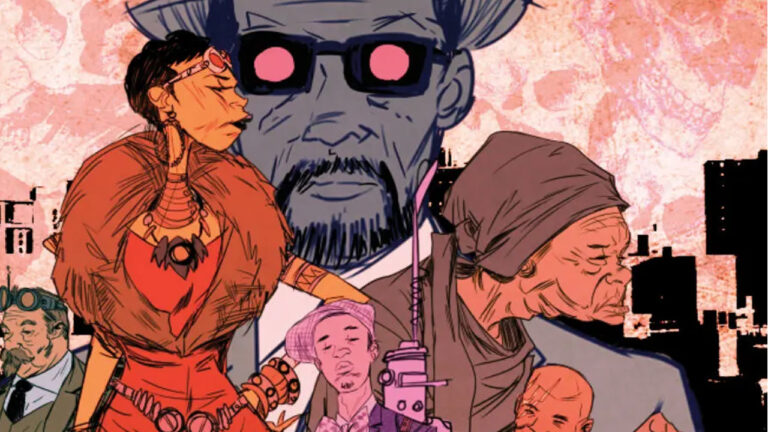 Written by David F. Walker and Chuck Brown
Written by David F. Walker and Chuck Brown
Art and cover by Sanford Greene
Published by Image Comics
bitter root is a marvelous gumbo, a marvelous collection and an amalgam of storytelling. Like okra, its elements are plentiful but can’t quite be measured, and under the right heat for the right amount of time they yield deliciously magical results.
And, like okra as I know it, steeped in darkness and American history.
Walker, Brown and Greene have poured black history into this tale that sounds a bit like ghost hunters, Lovecraft Countrythe works of Zora Neale Hurston and WEB duBois, much more.
At the height of the Harlem Renaissance, we meet the Sangerye family, who dedicated themselves to protecting the world from the monsters born of hatred and racism.
The historic horrific events of “Red Summer” — waves of white supremacist violence and anti-black riots in some 30 cities across the United States — and the Tulsa Massacre of 1921 morph into the main action which takes place in Harlem in 1924.
And the story uses the supernatural to explore the monstrosity of the oppressor’s hatred, and the burden of grief and loss for the oppressed.
Yet the narrative takes to the wheel primarily to guide the action, filtered through the Sangerye family’s own drama.
I know, this all sounds very heavy. Moreover, in less talented hands, all of this could appear as didactic and as a duty rather than an entertainment. On time, bitter root is heavy. However, the story is also fun with lots of action, adventure scenarios, steampunk weapons, monster battles, and more.
Additionally, you get sticky characters such as: Blink, a young woman who is the family’s best fighter against their will; Berg, a hulking genius whose weight is matched only by his voluminous, sometimes impenetrable vocabulary; and Johnnie-Ray, a white southerner who quickly learns the mistakes of his ways.
But let’s say you didn’t take African American studies in college, or you’d like to leave bitter rootThemes and sources marinate a lot more in your mind. This is where the Omnibus really shines.
In addition to collecting the numbers 1 to 15 and the Red summer specialthis hardcover edition is filled with essays by black critics and cultural scholars that further illuminate the material and its communion with other black literature and arts.
As the story progresses, the lore around the Sangerye family and their many tragedies unfolds in exciting ways. We meet other families who hunt jinoo – human beings transformed into monsters by hatred and racism. These other families of Native Jewish, Chinese, Irish, and Ashkenazi descent each call the jinoo by different, sometimes comical, names. (It’s not for nothing, there’s enough for one bitter root universe of diverse stories/families.)
And there is something moving about watching this family process their traumas and ponder the collective psychological toll of oppression, given the current wave of legislation aimed at whitewashing history.
Any version of bitter root worth picking up, but this hardcover is the best yet.
Rating: A




Add comment